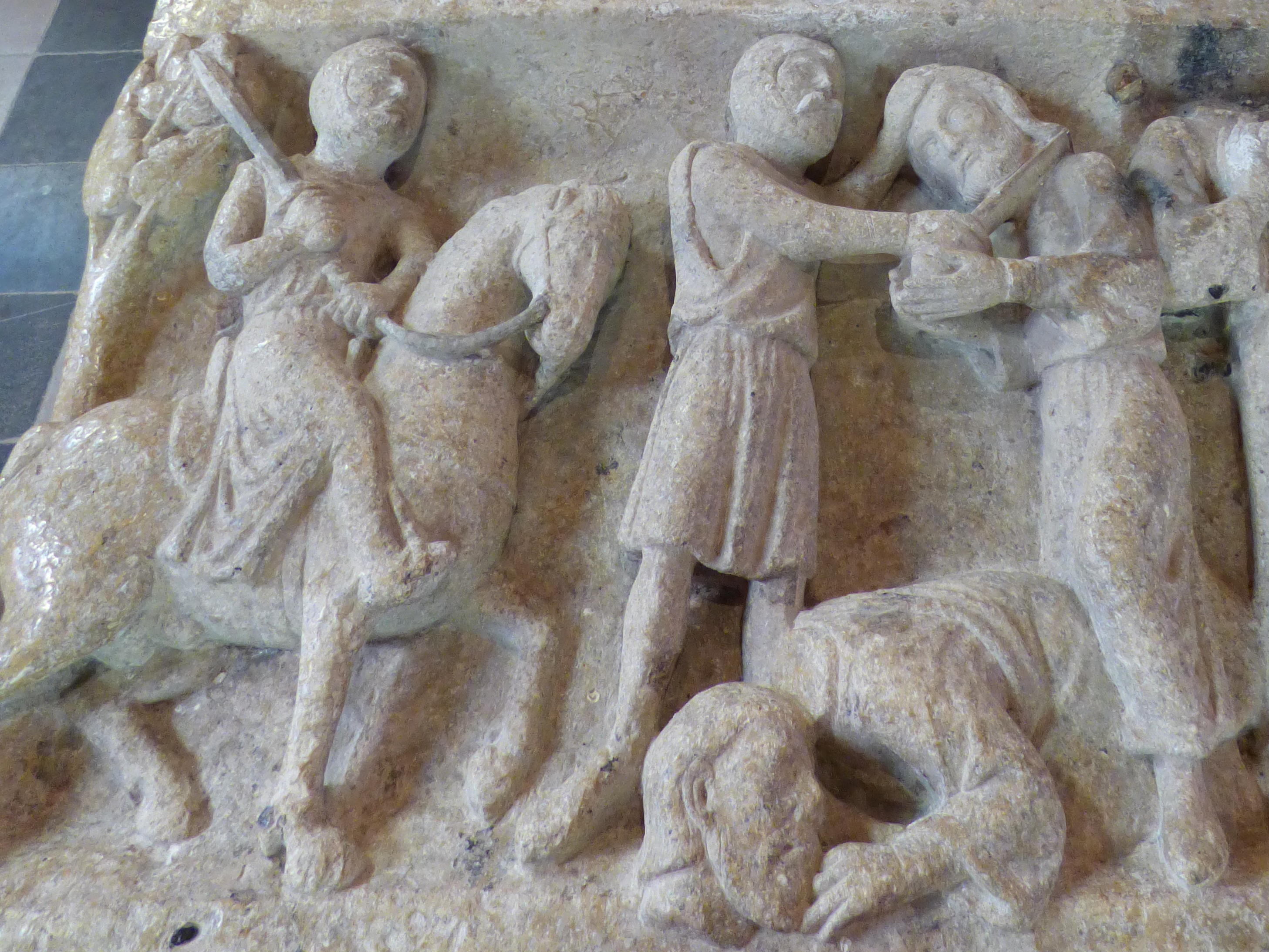
Try Amazon Audible Premium Plus and Get Up to Two Free Audiobooks
Martyrdom of Saints Fuscien, Victoric and Gentien, tomb, Eglise de Sains-en-Amiénois, France, late 12th/early 13th centuries.



The platform has two iconographic registers: the saints are represented in the upper part while below is the decapitation of Fuscien and Victoric in the presence of Rictoviare and next to them the two saints carrying their heads.
Source: la Somme de Tef
The knight is referenced as figure 15 in Arms and Armour of the Crusading Era, 1050-1350, Western Europe and the Crusader States by David Nicolle
15 'Martyrdom of Sts Fuscien, Victoric and Gentien', carved relief, County of Vermandois, late 12th/early 13th centuries
(in situ church, Sains-en-Amiennois, France)
The late 12th century saw the adoption of a remarkably uniform style of arms, armour and military costume throughout a large part of north-western Europe. This figure is in that style, which consisted of a long-sleeved mail hauberk with integral mittens and a mail coif, plus mail chausses on his legs, all worn beneath a simple sleeveless surcoat.